 A very common question that both David and I have been asked many times over the years (particularly of recent years) from serious golfers and their parents goes something like this; “if you’re a low handicap golfer how should you practice if you want to be a pro golfer?” What a great question. How should you practice if you’re an elite golfer who wants to become a top class amateur or even a successful professional golfer? Our answer is simple; you have to practice so that the end result is a competitive score average that is under par. David and I have performed a reasonable amount of inquiry into this question and that answer and we find very little in the way of information that can help an elite golfer to keep on improving their game-especially when they start to get close to par. There are a few articles on the internet that focus on helping golfers to break 80 by well-known golf magazines, and a few blog entries, but not much more than that. There is nothing of substance that focuses on helping elite golfers learn how to practice so they can break par on a consistent basis. To be honest we were quite surprised to discover how little golf instruction content is focused on elite golfer development online. That is apart from our weekly entries here at our blog at www.protourgolfcollege.com. So the next common-sense step for David and I was to conceive and then develop a comprehensive online elite golfer improvement program for serious amateur and professional golfers to drive their golf scores consistently into the red figures. We started developing the program that you are about to learn about by establishing some ground rules.
The last one should be obvious, but in our experience one of the problems with many of the self-development programs marketed on the internet is that they don’t provide a step-by-step approach. They give you a lot of content to satisfy the price they charge and then ask you to figure out how to make it work for you. One thing you can be sure of is that our new program is based on our experience working with elite golfers at our golf college and our program is more of a system than it is a program. We have gone through the trial and error of developing our program and our goal was to develop a system of steps that guide you to lower golf scores. Our new program is called Hard Core - Elite Golfer Improvement System (E.G.I.S) It is built upon a 4 step practice and performance structure that you use over 12 weeks that will guide you step-by-step through your practice sessions teaching you how to practice so you can learn how to break through to lower golf scores. The EGIS is a home based golf training program for serious (hard core) advanced golfers who want to become elite amateur golfers or professional golfers. Before You Read On… We don’t like to disappoint any golfer if we can help it, but we want to say right from the outset that this program will not suit male and female golfers who don’t like to practice, or who practice less than two hours per week outside of playing on the golf course. You have to put the practice hours in to benefit from this program, especially to become a red zone golfer (more about that later on).  That’s the reason we call it hard core. The only golfers who will truly benefit from this golf training system are golfers who; a) Can finish what they start b) Who don’t get distracted easily c) Who can focus on long term development and improvement This means that it will suit serious - hardworking elite junior and senior golfers of any age who truly want to learn how to greatly improve their golf skills and learn how to play good enough to break par consistently. This might seem like a bold and audacious statement but we're coming from a position of experience having witnessed many fine golfers come to a roadblock in their career where they don't know how to take their game to the next level and this is exactly where we focus our program. It also might seem strange that we wouldn't want every good golfer to use our new program but quite frankly unless you’re willing to put in the hard yards this golf improvement program won’t help you. No program will! Our Proven Methodology The great thing about this new program is that the practice routines and golf training methodology you will learn and use has been developed, testing, measured against thousands of the golf shots of our students in our full time program at Pro Tour Golf College. How many elite golf improvement programs can actually say that?  Let me show you through the EGIS program and you’ll quickly realize that this is a unique and comprehensive golf improvement program answers many of the questions that we have been asked by elite golfers about breaking scoring barriers. Step 1. Preparation Phase: 5 Core Golf Skills The EGIS program has been designed to guide you through the steps required to build a high performance golf practice program that will help you to learn how to break par on a consistent basis. Do you realize that the top professional golfers average around 12 pars in each round, 3 to 4 birdies and keep the bogeys down to less than 3? Our program has been designed to help you to;
Have you ever heard the quote "Victory Loves Preparation?" The first important step in the EGIS program is called the preparation stage which is where you go through a thorough process of assessing your 5 core golf skills so you can build a profile of your strengths and weaknesses. This part of the program is the most important and time consuming because you have to assess your core golf skills in a very precise way and it is the beginning of the journey to lower golf scores. You can see from the image below of the system that there are 5 core golf skills (grey, green, orange, blue and black) that we will focus on in this program. Within these core golf skills are the skill sub sets which are the actual golf skills that you will assess, develop and improve. When you think of the skill sub sets we want you to think of how they influence your golf scores in a positive way when you improve them. What we mean is that these golf skills influence more pars, birdies and bogeys or less depending on how capable you are in executing them. Here are what we call the defense skills and producer skills that you will identify and improve in your game to produce lower golf scores. 1. Par Defense Skills 2. Par Producer Skills 3. Birdie Producer Skills 4. Bogey Defense Skills Putting Skills Assessment – Par Defense Skills / Birdie Producer Skills To start with we want to know how good a putter you are on all types of putts from short through to long. Are you better putter on right-to-left putts from 3 feet or left-to-right putts from 6 feet? Do you know? So you will assess your short putting skills (grey color zone) from 3 feet to 12 feet (1 metre to 4 metres). Your putts are assessed from all types of angles to determine just how effective you are with a putter from this critical range. The best golfers are great putters and we have found that besides working on perfecting your stroke if you don't practice your putting skills so that you condition your nervous system to manage the normal stress associated with tournament play then it doesn't matter how good you stroke your putts, you'll miss many more than you make. ****************************************************************************************************************************************** Here's a Good Tip: Always practice your short putting as if each putt really mattered. On the PGA Tour the best putter inside 10 feet was Luke Donald in 2012 who made 761 putts from 844 attempts which translates to an amazing 90.17 percent of putts made from this distance range. ****************************************************************************************************************************************** Once we know how good a short putter you are, you can learn how to practice to become a great short putter just like Luke Donald. Long Putting Skills Assessment – Par Defense Skills Next we need to know how good you are from long distances from 15 feet to over 42 feet from the hole. Great putters rarely 3 putt and from this distance range you have to be able to get your putts close enough to the hole to make the next one. ****************************************************************************************************************************************** Here's a Good Tip: If you want to find out how good a long putter you are count your 3 putts up over your last 10 rounds of golf and divide them by the total amount of holes you played to see how good your long putting is. For example 12 - 3 putts divided by 180 holes = 6.66%. On the PGA Tour in 2012 Brian Gay was the best at 3 Putt Avoidance with just 24 - 3 putts for the 1,566 holes he played which is a very low 1.53 percent. ****************************************************************************************************************************************** It might surprise you to know that long putting is rarely practiced enough by aspiring golfers and yet by learning how to roll your ball correctly over the 15 to 42 feet distance range you will lower your golf scores. In your long putting assessment you will putt from various distances and determine how likely you're to three putt or two putt. Greenside Wedge Skills Assessment – Par Defence Skills The next area to assess is your greenside wedge skills. This is your chipping, pitching and bunker skills within 30 yards of the edge of the green surface. We’ll show you how to assess these important skills and determine which of them needs more attention. These skills are your par saving skills and as such require constant attention to become a golfer who can break par on a regular basis. ****************************************************************************************************************************************** Here's a Good Tip: When you practice your greenside skills practice from as many different places as possible around the green and make sure that you practice from uneven lies as many elite golfers we have observed practice mostly from level lies. On the PGA Tour in 2012 Brian Gay was the best at defending par around the green with par or better 376 times from 584 attempts which translates to 64.38 percent. ****************************************************************************************************************************************** Greenside Trouble Shots Assessment – Bogey Defence Skills The following skills are rarely practiced and yet you’re confronted with trouble shots in most of your rounds of golf. Bad lies in the grass and bunker and high flying soft landing lob (flop) shots to tight pins are skills that you need to improve to turn potential bad scores into good ones. When you miss your approach shots in the wrong place you have to rely on your greenside trouble skills to get you out of trouble and back into the game. ****************************************************************************************************************************************** Here's a Good tip: When you practice greenside skills make sure you spend a minimum of fifty percent of your practice hitting shots from tough lies like half buried shots in the grass and bunker. You get them so practice them. On the PGA Tour in 2012 Luke Donald was the best at protecting par from the rough within 30 yards of the edge of the green and from 98 attempts he made par or better 68 times which translates to 69.39 percent success rate. ****************************************************************************************************************************************** These skills are your bogey defence skills that help you to turn double bogeys into bogeys and bogeys into pars. The best golfers are great at extricating themselves from trouble lies and in our program we’ll teach you how to do it as well. Approach Wedge Skills Assessment – Birdie Producer Skills The next skill that we will assess is your approach wedge skills that range from 30 yards to 85 yards. Think of your approach wedge shots as your birdie producing skills as these are the shots that you play into short par 4 holes and third shots on par 5 holes with the purpose of hitting them close enough to give yourself a great opportunity to make the putt. ****************************************************************************************************************************************** Here's a Good Tip: All the great wedge players we've studied strike their wedge shots with a shallow angle of approach. In other words they strike the shot with very little divot which produces soft flying wedge shots that stop quickly. Shallow wedge strokes are the best technique to learn if you want to control the distance of your shots into the green. To shallow out your wedge stroke reduce your wrist cock by half so that you feel like the stroke is more one piece between your arms and the golf club. The pro’s on tour are really good with these shots and the best on the PGA Tour in 2012 was Justin Rose from 50 to 75 yards with an average distance from the hole of 6 feet 11 inches from 17 attempts in 69 rounds. This translated into 8 under par which means he holed about 50 percent of these approach shots for birdies. ****************************************************************************************************************************************** By assessing your competency in the distance range of 30 yards to 85 yards we can identify where you’re weakest wedge distances are show you how to turn them into a strength, so you can give yourself the opportunity to raise your birdie average and drive your golf scores lower. Full Swing Skills Assessment – Par Producer Skills The last core skill to be assessed is your full swing skills. These are shots you perform with a full swing from 90 yards through to 230 yards so they encompass short irons, mid to long irons, hybrids, fairway woods and your driver. These are your primary par producing skills and through our program you will greatly improve the way you execute them in your rounds of golf. ****************************************************************************************************************************************** Here's a Good Tip: One of the most important elements of good shot-making is consistent distance control. Hitting the ball solidly out of the sweet-spot more often means that your golf shots are going to travel the required distance more often than not. We have observed that elite golfers who are out of balance in their address position will quite often struggle to maintain balance through their golf stroke and this can lead to slightly off center hits that produces shots that finish short of the target. On the PGA Tour in 2012 Graeme McDowell was the best at hitting the green in regulation from the 150 yards to 175 yards range with 85 greens hit out of 103 holes played (55 rounds). This translated to greens hit in regulation from 150 to 175 yards of 82.52. ****************************************************************************************************************************************** Do you know what your greens hit in regulation is from this distance range? Your full swing skills not only include the straight golf shots you hit from tee to green but also involve your shot-making ability for controlling sidespin for shots such as hooks, slices, fades and draw shots and also high and low shots. Because you’re not in the fairway all the time you will constantly be confronted with shots that require you to curve your shots around obstacles and hit it higher than normal or lower than normal. Elite golfers spend a lot of time working on hitting straight shots but rarely spend enough time working on the full swing trouble shots.  Well we hope you enjoyed this preview of just a small part of the EGIS program. As you can see it is a comprehensive golf improvement program that will suit serious junior through to mature golfers who want to learn the drills, routines and practice methodology to lower their golf scores. We will be launching our pre-launch videos next week leading into the launch of our revolutionary new golf improvement program and we're giving our readers the opportunity to be first on the list to receive them. Put your email address in the form below and we'll put you on the list so you can receive our pre-launch videos next week. Lawrie Montague and David Milne - Pro Tour Golf College Your Success On Tour is Our Business [email protected] "Too many parents of juniors wrongly believe that winning age group tournaments is the main focus. This approach forces their child to specialize too early playing only competitive golf and not sampling other sports." - David Milne  Every parent wants to give their child every opportunity to become the best they can be. In golf it's no different, but are they actually sabotaging the progress because they don't have a full understanding of what is required and get led by misinformation most of the time? I will explore the main pitfalls that a parent and child will surely face and offer suggestions based on my over thirty years experience as a golf coach and backed by scientific research. The first thing a parent needs to understand which Lawrie Montague (Pro Tour Golf College co-director) and I have touched on in previous articles is that there are three separate "cycles" that a junior golfer will pass through and for them to reach their full potential certain benchmarks in each cycle need to be accomplished.
I use the word approximately because boys and girls develop at different rates with girls generally developing a little earlier in all cycles. First Cycle (7 to 12 years old) The main pitfall in the first cycle is too much competition and not enough development of fundamental co-ordination, agility movement and technical golf skills. The research says a ratio of 70% training to 30% competition for the available time allotted for sport is the ideal balance to achieve short and more importantly long term positive results. Too many parents of juniors wrongly believe that winning age group tournaments is the main focus. This approach forces their child to specialize too early playing only competitive golf and not sampling other sports. This approach does not allow the junior to develop other fundamental movement skills like running, throwing, catching and jumping skills which they would develop playing other sports. It is recommended that juniors should be encouraged to participate in another two physical sports apart from golf in this first cycle. Equipment correctly fitted is also an essential prerequisite for young golfers to learn proper setup and swing fundamentals. Cut-down adult golf clubs are not recommended. Length of the golf course is another important consideration with a maximum distance of 5000 meters (5,500 yards) and special short tees be put into play to accomplish this. Scientific research has suggested that it takes around 10 years or 10,000 hours of training to achieve an elite level in international sport. In fact PGA Tour statistics show that it takes closer to 20 years in golf. So there's no need to rush the development process and if you miss developing the technical skills and the fundamental movement skills in this critical cycle the research shows the junior will have difficulty excelling in their chosen sport. The most important thing a parent can give their child is provide positive support and guidance to help make their child's involvement in sport a fun experience and not focus on the winning at all cost culture that I have witnessed especially in recent times. Ensure you explore your child's expectations and aspirations and not try to impose your's on them. By aligning their goals with your's no one is totally disappointed at the start, in the middle and at the end of this first cycle. Plus everyone will have a smile on their face!  Second Cycle (13 to 17 years old) The most common pitfall in this cycle is a lack of a muscular skeletal screening by a golf specific physiotherapist who can set a physical training program that will keep the young golfers body in balance. This is especially true during growth spurts and working with a physiotherapist will help with injury prevention and with performance as well. In most other sports physical training is an integral part of the athletes program but this is neglected by most parents of junior golfers in this cycle. Research shows that during this cycle what ever time is allotted for sport 60% is skill development and 40% should be directed to the physical development of the young golfer. Another area that is totally neglected and can be a pitfall later on is the mental skill development of the golfer. Before you rush off and buy every book on how to train the mental skills in golf, first get your child to complete a basic mental self-assessment. These are just some of the questions that will help you and your child introduce mental skills into their development program during this cycle. One thing that needs to be addressed in this cycle is not to be led by the equipment manufactures marketing. I have witnessed it first hand when a thirteen year old gets an upgrade or present of especially a driver and it's the same specification as a "flavor of the month" PGA Tour professional in loft and shaft flex. Not enough loft and a shaft that is too stiff will encourage a low and dipping to the right (right hand golfer) ball flight which will influence the dynamic balance of the junior. Make sure you have a reputable club-fitter who has experience with juniors to regularly check the play-ability of the equipment for your child. The benchmark ratio in cycle two is 60% training to 40% playing with about 20 hours as the minimum. That translates to two rounds of 18 holes per week (10 hours) and 10 hours of practice. A guide of 10 to 20 tournaments per year is the recommendation.  Third Cycle (17 to 22 years old) In this cycle the young golfer will devote 40% of his available time to training and 60% to competing. The major pitfall in this cycle is not having a annual periodization plan that allows the player to peak at specific periods during the year to coincide with important golf tournaments Most golfers who don't have a periodized development plan try to peak their games 12 months of the year and are generally doomed to fail. The two most successful golfers Jack Nicklaus and Tiger Woods have been the best at planning their year to peak at the four majors golf championships. At the start of this cycle it is critical to build a team of service providers that will deliver sports medicine and sports science support. During this cycle the young golfer can deliver explosive power and using 30 lbs of muscle and every joint in the body during the swing producing 2,000 lbs of force in less than 1/2 a millisecond. This makes it imperative that a comprehensive strength and conditioning program is in place to allow the young golfer to perform at their best week in week out. The lack of statistic monitoring of all tournament rounds is what stops most golfers in this cycle reaching the next level. When you know which areas of your game are holding you back you can do something about it. I don't mean basic statistic's but an online program like Shots to Hole which is going to give you accurate feedback on where you need to put more emphasis to get positive results. In this cycle the young golfer totally specializes and focus's only on golf, and a commitment to a balanced lifestyle and life skills will go a long way for the young golfer that is going to spend a lot of time on the road and away from home and family. I have only brushed the surface of this important topic but it should give you a better understanding of some of the pitfalls and obstacles that lay in wait for parents and in fact anyone associated with the development of a junior golfer. There are a growing list of countries that are putting into place long term player development programs and are achieving outstanding results with their golfers. The information is available and Lawrie and I at Pro Tour Golf College have pulled it all together and will make it available in the near future. David Milne and Lawrie Montague - Pro Tour Golf College Your Success On Tour is Our Business  If we look at any level of golf, lower back pain is the most common reported injury, both female and male. Some perspective needs to be taken here in that the lower back is also one of the most common injury area’s in the population overall (golfing, non-golfing, sporting and non-sporting). However that aside, forces through the lumbar spine in a technically sound backswing are still very large (~ 8 times bodyweight compressive load through L5/S1). The golfer with pain in their lower back, as well as receiving acute physiotherapy treatment, should have a comprehensive technical assessment by their coach. Common swing deficiencies, even on a very minimal degree, when repeated on every swing; day-in, day-out, can easily lead to a significant injury (e.g stress oedema or stress fracture). Examples of swing deficiencies that can lead to lower back pain are reverse pivoting, a reverse upper spine and the arms getting caught behind before impact.  Changes technically by the coach will start the process; this then has to be combined with a golf specific physical screening. Problems here, say with core and glut strength, tightness through hip flexors and rotators or poor lumbo-pelvic motor patterns, will no doubt be discovered and then properly addressed with appropriate exercise and treatment. In future columns I will look specifically at the different injuries that actually occur, possible physical causes and directions to fix. I always squirm when I hear people comment; ‘I cannot play golf because I have a bad back’. A good golf swing actually works hand in hand with a healthy back. Most people, if they properly assess what is causing their pain, technically and physically, can not only decrease dramatically their pain symptoms, but also improve their swing and lower their scores. 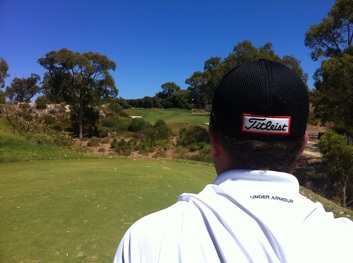 A relatively new and pervasive phrase has been circulating amongst athletes, coaches, and the performance community: focus on the process. Does a player swing a club in order to focus on the process of swinging? Or does he swing it in order to advance the ball toward a desired target? Is the game about hitting a ball, or the twelve-second routine that precedes it? Does a swimmer focus on the movement of his arms, or does he just swim? Does a soccer player focus on the process of kicking, or does he just kick? The individuals who recommend focusing on the process are the very same ones who recommend not over-thinking, and just playing. So on the one hand a player should just play, yet on the other hand he should focus on the process? Is it a wonder that athletes seek psychological assistance? Yet it is often the psychologists that foster the confusion from which these athletes suffer. Children will often just play. But none of them focuses on the process. And no adolescent who ever fell in love with any game decided to pursue it as a career so as to focus on the process.  Be that as it may, for purposes of this conversation, I am not advocating a focus on the process, or a focus on the result. I seek only to unravel the full complexity of the logic before us so that we may examine it in full and unassuming detail. Is the performance community simply illogical and malevolent for creating such a phrase? Certainly not. For, in some convoluted fashion, this advice seems to be reasonable, if viewed from a particular perspective. And what is this perspective? This phrase is not a kernel of knowledge, nor is it a great pearl of wisdom. It is a reaction. A reaction to the anxiety of the athlete. Specifically, it is a reaction to help ease the anxiety of the athlete. Why is the athlete anxious? Because he focuses on results. The logic, thus, proceeds as follows: if we know that a focus on results leads to anxiety, and our aim is to lessen the athlete’s anxiety, then we must shift his focus away from the results and toward the process in order to produce a given result. It sounds reasonable and logical, from this perspective. Another example of how clever the mind can be. But there is a problem which few seem to understand. If one’s aim, one’s reason, one’s intention, and one’s goal in focusing on the process is to get a particular result, then he is not focused on the process at all. He is simply using this as a clever pretence in order to attain a particular result. And, therefore, does his ultimate and fundamental focus not remain squarely upon the result? Does it, therefore, not make sense that despite this clever new trick that the athlete continues to writhe in his own skin? Problems do not go away when we find a solution for them. They go away when we stop creating them. The athlete’s anxiety is not an ailment in need of treatment. It is a disease in need of understanding. Kapil Gupta, M.D. Siddha Performance Ultimate Freedom. Ultimate Performance. www.siddhaperformance.com [email protected] 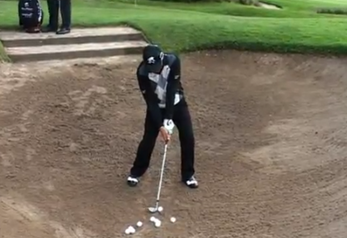 Gary Player of South Africa Over the last sixty years South Africa has continually produced world class players, and this from a country that only has 500,000 active golfers. That number is only one percent of the total population of 50 million in South Africa currently. So why do South African golfers lead the rest of the world outside the USA in winning majors in the modern era? To understand fully your have to look at all the factors that produce not just world class golfers but also the culture that encourages the youth to strive for excellence in everything they do - especially in sport. Like in Australia youngsters in South Africa take part in numerous sports like rugby, cricket, athletics, soccer etc. Now scientific research has labeled the ages of 7 years old to 12 years old as the "sampling" stage and critical to developing the basic sport skills required in all sports. The sports mentioned above help develop running, jumping and throwing, catching skills that in turn fine tune co-ordination and agility at an early age, which if not learn't at an early age will hold back the child back from excelling in sport. The misconception by most people especially parents is that Tiger Woods from a toddler only played golf has held many a young golfer back and caused early burnout and fallout from the sport. In fact Tiger played basketball, baseball and participated in track events and only specialized in golf later on in his early teens.  Louis Oosthuizen playing on the PGA Tour The other major influencing factors in my opinion are the ideal all year round weather conditions, a strong local tour (The Sunshine Tour) and quality coaching. Combine this with golf courses that generally play firm and are a good test of golf that encourages young golfers to develop a golf game that suits all conditions. But the main factor I believe is that the leading South African professionals like Louis Oosthuizen have always supported is local golf and have given back by promoting and growing the game at home. This tradition from Gary Player, Ernie Els and the current crop of players has created an excellent role model for young golfers in South Africa to emulate. The ideal all year round weather conditions allows twelve months of uninterrupted golf for the development of golfers all around the country. The South African Golf Association is the recognised body that looks after amateur golf from growing the game at grassroot level all the way to an elite long term player development program. Other bodies that also play a huge part in developing young golfers are Ernie Els's Fancourt Foundation and the South African Golf Development Board (SAGDB). Both the above are an integeral part of the recent successes of South African golfers in tournaments around the world. Louis Oosthuizen (2010 British Open Champion) and Branden Grace who won four times on the European Tour in 2012 where scholarship holders of the Ernie Els Fancourt Foundation (EEFF). The EEFF mission is to identify young South Africans predominantly from families of limited resources and provide them with education, life-skill assistance and playing opportunities in order to produce successful well rounded and educated young golfers. Ernie does not just lend his name to the foundation but is heavily active by visiting and spending time with the players. Founded the same year 1999 as EEFF, the SAGDB is fully supported and endorsed by the Department of Sport and Recreation, R&A and the other South African Sporting Bodies. The main goal is to "Take the game to the people" by introducing it to primary schools in all the states providing free coaching and practice equipment. Most of the programs are delivered by PGA accredited professionals.  Now as outlined earlier the PGA of South Africa has played a big role in providing well trained teaching professionals that provide excellent instruction to golfers in the long term player development program. The PGA of South Africa was formed in 1925 and has currently 436 fully qualified members who employ and train 221 apprentices. All the above will mean nothing if elite amateurs and tour professionals have no tournaments to play in. So this is where the PGA Tour plays it's part. Branded as the Sunshine Tour it provides the springboard for professional golfers to play for prize money in tournaments twelve months of the year. Currently in the 2013 European Tour schedule seven tournaments of from the Sunshine Tour are co-sanctioned. And this really helps especially the young professionals who have no status on the European Tout the opportunity of gaining membership. These seven tournaments are the main reason why there is so many more South African professionals playing on the European Tour than in previous times. So who are the players for South Africa that have won those 22 Majors I mentioned at the top of this article. In the 1950's, 60's and 70's the Majors won were at the British Open but in the 1980's, 90's and 21st Century the US Open and Masters have been good to South African's. 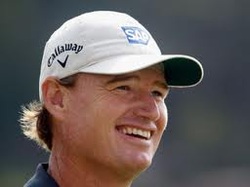 Ernie Els and many of his compatriots have won against the best fields, especially on the PGA Tour:
And South African professional golfers who have won on the European Tour include all the winners on the PGA Tour as well:
I have missed many more but as the above record shows in the majors, the South Africans do very well especially when you compare their record to the whole of Europe where 6.9 million play golf, Asia 13.6 million and the USA 37.1 million. And like Australia, who also do very well in professional golf, it comes down to these factors:
All the requirements and ingredients are there so you can expect more South Africans to win many more golf tournaments and major golf championships in the coming years. David Milne and Lawrie Montague - Pro Tour Golf College Your Success On Tour is Our Business  Dr. Rob Neal, Golf BioDynamics CEO, explains Bubba´s golf swing science that made him the winner of 2012 Masters. Dr. Rob Neal explains the science behind Bubba´s swing while Bubba Watson explains his feeling on the golf shot. The segment was aired on "Live on Masters 2013" on the Golf Channel on April 10th. Want to know more about Dr. Robert Neal and his work with golfers? You can go to the Golf BioDynamics (GBD) website at http://www.golfbiodynamics.com  14 year old Guan Tian-lang playing in his first US Masters. The youngest ever qualifier Just before the performance begins, before the first serve, the first tee shot, the jump ball, the big speech, or the final putt, are you free? In these moments, do you have command of your mind? Can you use the mind as you wish? Can you look the gallery in the eye? Can you control your club as if it were an appendage? Or are you subservient to the result? A person who is free belongs to himself. When the situation arises, he summons his abilities and directs his faculties according to his command. A person who is not free allows the result to define him. Together we can change the way you think, analyze your perceptions, and make your mind work for you rather than you for it. Kapil Gupta, M.D. Siddha Performance www.siddhaperformance.com Ultimate Freedom. Ultimate Performance. It’s no secret that to become a successful tournament professional you have to develop exceptional green-side and approach wedge skills. Consider for a moment how much of your golf is played from inside of 100 yards and you will very quickly realize that improving your wedge skills could be the single most important strategy for lowering your competitive score average. Have you noticed that when Tiger Woods, Phil Mickelson or indeed any professional golfer is in contention in tournaments how sharp their approach wedge and green-side wedge skills are?  When professional golfers are in form so is their scoring ability and the key to becoming a competitive amateur or in fact professional golfer is to practice your wedge skills. I'm sure that is can be argued that the weeks that professionals golfers are playing their best they’re in-fact holing more putts than usual. Yes they are, because they're hitting their shots closer to the hole! What is often overlooked is that the average wedge proximity to the hole for that week is closer, meaning that the probability of holing more putts is higher. Closer approach wedge proximity = more putts made = lower score In 2012 the proximity to the hole from inside 100 yards was between 12 and 17 feet from the hole for the PGA Tour golfers ranked from 1 to 100. Can you imagine if over 12 months the farthest you hit the ball from the hole was 17 feet when you were hitting approach wedge shots from inside 100 yards? From 10 to 15 feet PGA Tour pro’s ranked 1 to 100 make between 30 and 40 percent or 3 to 4 out of every 10 putts they attempt on average! So you could easily imagine that when they are in form they might hole another one or maybe two because they hit it even closer. So the bottom line is that you must learn how to hit your golf ball closer to the hole when you have a wedge in your hand. The closer you hit your approach wedge to the hole on average the higher your chances of making the putt. So how do you do it? What are the characteristics of an excellent wedge technique? Well for a start, great approach wedge golfers don’t gouge huge divots from the turf but instead create divots that go forwards more than they go down. Take a close look at your wedge divots when you hit an approach wedge shot from 75 to 100 yards and notice the depth of your divot and the direction of your divot. The divot should be relatively shallow; like say the depth of an iPhone 4, and one to two iPhones long depending on the type of turf you hit your shots from. Generally speaking softer turf grasses like bent grass usually produce longer divots compared to drier and coarser Bermuda type grasses of the south. The direction of your approach wedge divot should be very slightly left as you look at it in relation to your target. This is because the golf club strikes the ball as it is travelling left (see above) so it creates a divot shape that can be thought of as straight-going left. The next time you go to a tournament where you can watch professionals hitting short irons into a par three hole take a good look at the divot shape and direction. You’ll be surprised how similar they all are. Approach Wedge Swing Model In this article I've chosen Billy Horschel (below) a fine young PGA Tour golfer who is coached by one of the top PGA golf instructors in the United States and the US PGA Teacher of the Year in 2010, Todd Anderson. Study this wonderful - simple wedge technique of Billy Horschel in slow motion and think about the elements that make his golf stroke seem so effortless. Regardless of your preferences for the style of golf swing technique you follow, it is hard to fault the quality of this one. In this article I'll be primarily focusing on the action of the golf club and not the body motion which we'll cover in another article. Personally what I like about Billy Horschel’s simple technique is that there is no wasted motion. What I mean is that he doesn't have any unstable elements between his arms-club and body that would influence inconsistency. Typically the unstable elements that we see in elite golf swings (especially approach wedge techniques) at Pro Tour Golf College are as follows; 1. Too much plane angle variability from backswing to impact 2. Too much up and down motion of the upper body 3. Too much sideways motion below the waist 4. Too much sideways motion above the waist 5. Arm swing out of sync with body motion All these unstable elements (and there are many more) are the effects of something going askew in the technique and are often interconnected. The technique behind building a great approach wedge stroke pattern is to control a number of the basic elements that influence direction plus consistent and solid contact. Approach Wedge Impact GeometryThis will be easier to achieve from a great starting position. Notice how beautifully balanced and athletic Billy Horschel is in the address position. His arms are hanging freely down suspending the golf club underneath his shoulders ready to initiate the back-swing phase. One of the primary responsibilities of your golf instructor is to help you to set-up in such a way that the result is the creation of a sound golf swing technique. This is a great example of a set-up you should incorporate into you technique. Look at the three images of address, impact and post impact and notice how I've overlaid a translucent yellow triangle to highlight the function of the arms through the impact zone. Study those images carefully. The triangle extends from the base of the hosel (bottom of shaft) and along the golf shaft and into the lower part of the spine (lumbar region) and from there it travels up the back and into the top of the shoulders (base of cervical spine). There are only three points I want you to take away from this observation of Billy Horschel's approach wedge technique.
 3. Finally take note of the right arms relationship to the shaft from address to post impact. The angle between the shaft and right arm is maintained throughout this critical time in the stroke. The club-face angle is in-sync with the left wrist with no breakdown between the two. Often we find at this time in the stroke that the left wrist is in a bent condition and there is little to no angle left between the right arm and shaft. Post-Impact Drill One of the best practice drills you can use to build these alignments into your stroke is to rehearse the impact to post impact alignments as you see them here in the photos. Hold the finish and adjust your body angles and rotation until you can produce similar alignments. When you hit golf shots add the feel of the drill into your shot-making. This drill really helps you to build the three points into your technique. My final suggestion is that you do this with the help of your golf instructor at the beginning as he/she can interpret the alignments correctly and make-sure that you incorporate them successfully into your approach wedge swing. Approach Wedge Swing Plane GeometryIn the three photos above I've added a translucent arrow that describes the action of the golf shaft in relationship to the ball and the target. Notice that the three images describe; 1) The mid back-swing alignment 2) The mid down-swing alignment and 3) The mid follow-through alignment. The mid back-swing and down-swing alignments (Pictures 1 and 2) could almost be mistaken as being the same photo but they're not. What we are observing is real control over the direction of the golf shaft - a characteristic of great approach wedge golfers. Shaft plane control helps you to hit straighter approach wedge shots and generally speaking the more variation your have between the back-swing and down-swing plane angles, the more compensatory motions are required to achieve a sound and consistent impact condition. Yes there are exceptions to the rule but very few. Any time that the golf shaft is moving outside of the space between the right elbow and the top of the right shoulder (the width of the arrow) you will discover that your directional control will be harder to manage which makes it more difficult to be consistent.  A great example of how plane angle control influences a successful release motion is by studying picture three in the mid follow-through phase. Billy Horschel has allowed the golf club to literally free-wheel itself through impact and into this condition. Look at the club-face angle how it has rotated very little by this time in the golf swing. This is where you will notice differences between tour golfers and higher handicapped amateur golfers. The release motion for a tour golfer is controlled through the action of the right arm straightening and the left wrist uncocking and rolling. The arm-swing and body rotation work together and the idea is to reduce or eliminate hand and forearm manipulation. Not that easy to do but that's essentially what top level teachers like Sean Foley is doing with his tour golfers. With an approach wedge stroke ideally there will be minimal left wrist roll (there will be a more with longer golf clubs) after follow-through when both arms are straight. As the club travels up the plane angle the shaft rotates enough to maintain the plane angle relationship it had in the mid back-swing condition. Swing-On-Plane Drill One of the best drills to practice is to swing the golf club as you see it in the three photos. Swing the wedge back to the top of your back-swing position and swing it down with the 'feel' that it is in the same plane going back and down and at the bottom of the swing turn your body with release of your swing and let the golf club 'free-wheel' back up the plane. The golf swing should never feel contrived or guided, but should simply be swung backwards and forwards with the primary focus being control of the direction of the shaft between the right elbow and top of the shoulder. I hope that you have enjoyed this article and that you have gained some new insights into control of the distance and direction of your approach wedge shots. An article like this can never fully explain what is going on in a tour golfers swing but hopefully you have acquired some useful information that will help you to gain a level of control over your approach wedge shots from inside 100 yards that leads to closer proximity to the hole and more putts made. Lawrie Montague and David Milne - Pro Tour Golf College Your Success On Tour is Our Business  If you are a true US Masters addict and you live in Australia or Asia than you will be sleep deprived the rest of this week and will be useless at work and home like the rest of us. The question on everyone's lips has been when will Tiger win his next US Masters? It's been a while since he last won at Augusta. In fact it was way back in 2005 nearly eight years ago. I will use some recent statistics that will support the reasons why he will win and the same for why he won't. Tiger has always since winning in 1997 has arrived at Augusta the perennial favorite. He has won on four occassions 1997, 2001, 2002, 2005 and it seems every year he is in contention to win. There are two main reasons why Tiger has arrived with the expectations of his golf fans, the media and most of his competitors believing he is the real deal in 2013. Tiger's Domination of the Par Fives Like he did in his prime when he was winning all fourteen of his majors he led the par 5 scoring category every year except for two years. Now compare his par five scoring in 2010 and 2012 where he would not have ranked in the top 20. And most damaging is in 2012 at Augusta National he was only one under (His worst score on the par fives as a professional) and the result was his worst Masters finish as a professional tied 40th. And his last win at Bay Hill he was a combined 12 under for the par 5's, easily the best and two strokes better than anyone else in the field. If you add the aggregate total of his scoring on Par 5's in his three tournament wins this year it comes to a staggering 35 under par! The par 5's account for 76% of Tiger's strokes under par for those three tournaments, compared to only 55.9% for the last eight stroke-play tournament winners on the PGA Tour.  Tiger's Putting Tiger's putting statistics are "through the roof" this season and in fact is the best it's been since he joined the tour in 1995. He currently leads the stroke gained-putting on the PGA Tour with +1.48. This translates to gaining 1.48 strokes on the field each round and 5.92 strokes over four rounds. The previous best coming into Masters week was +.0.84 Thats the difference between winning and running 30th! When he won at Bay Hill a couple of weeks ago he gained 11.2 shots on the field on the putting green alone That is more than 2 full shots better than any tournament he has played in since strokes gained-putting was tracked by ShotLink in 2004. In all the putting categories (below) including 3 putt avoidance Tiger finished in the top 5 ranking and in 2012 he was outside the top 30 in those categories. 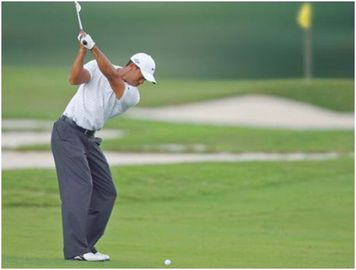 Now let's have a look at why Tiger won't win the Masters and what is going to hold him back in future Majors if he doesn't improve in the following areas. The Weekend "Mojo" Has Gone Missing In 2012 although Tiger won three times it was evident that he was having problems finishing off tournaments on the weekend. The statistics don't lie. He was 8 under for round one and two in Majors and 15 over for round three and four. In fact he did not break par in any round on the weekends of majors in 2012. This trend did not start in 2012. From the US Open 2004 to the US Open in 2009 he made 18 cuts out of the 19 Majors he played in and he maintained or improved his position on all 18 occasions. That is impressive! In 12 Majors since he made the cut in 10 of them and maintained or improved his position only once! The lone exception was the US Open at Bethpage Black where he was tied 25th going into the last round and finished T4th. Not so Impressive! A player that I was coaching at that time Michael Sim played with him on that day and said it came down to Tiger's 2nd shot on the 15th that flew a meter too far that turned a possible birdie into a bogey and stop the charge. Approach Wedges Set Up Scoring There was one area of Tiger's game that improved immensely while he was being coached by Hank Haney was his wedge game. His distance control was phenomenal and that wedge he hit into the last at the 2008 US Open at Torrey Pines to set up that putt to tie Rocco Mediate and win the playoff the next day was what it was all about. The stats show although he has improved his approach wedges they are not where they need to be especially at Augusta National where precise wedges are critical to set up those elusive birdies and save the occasional par. This is where if Tiger gets back to his best in this area he is going to be very hard to beat at the Masters. It will be interesting to see which of the above four catergories will hold Tiger back or allow him to have Bubba Watson put the green jacket on him for the fifth time in his career and move him closer to reaching Jack Nicklaus's 18 Majors.
On that note it is interesting to know that in 1977 Jack Nicklaus had turned 37 in January and had won 14 Majors in 60 starts as a professional and Tiger has turned 37 last December and has also won 14 Majors in exactly 60 starts as a professional. Is that a coincidence or is it an omen? David Milne and Lawrie Montague - Pro Tour Golf College Your Success On Tour is Our Business  Perfectionism has been placed under the researcher’s microscope in recent years to determine whether this complex personality trait has a positive or negative influence on performance and well-being. Some of the most controversial examples of perfectionistic individuals can be found in the world of elite sport. When Tiger Woods won his first Major at Augusta he was the longest off the tee by more than 30 yards. He was hitting wedges & 9 irons into the par 5's and that is when talk of Tiger proofing Augusta started. He won by a record 12 strokes and immediately began the task of transforming his swing. Move to the centre court at Wimbledon and you will see the cameras fixed on Rafael Nadal’s eccentric on-court routine. In front of the chair Nadal is sitting on during breaks you will always see two water bottles (one chilled, one not). Every time play changes ends the bottles are lined up so the labels face the baseline of the side he is playing. As they are repositioned he takes a sip from both without fail. 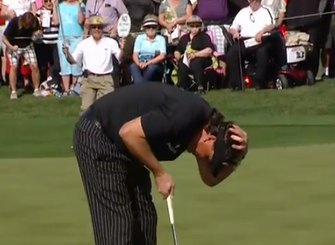 Critics and fans alike have questioned whether these obsessive behaviors are the result of perfectionism gone awry or the secret to success. Is perfectionism, good, bad, or both? This is the question posed by many Sport Psychologists including myself. Recent research emphasizes perfectionism as a double-edged sword. On the bright side, perfectionism has been labelled a hallmark of Olympic champions, characterized by extremely high personal standards and an insatiable appetite for success. On the flip side, when that drive to succeed becomes an obsessive need to avoid failure, the darker side of perfectionism can rear its ugly head. Research has shown that an adaptive form of perfectionism is indicated by high personal standards for performance, neatness and precision, and persistent hard work and effort in one’s achievement striving. In this form, a perfectionistic individual exemplifies very similar traits to the “high achiever.” It appears that perfectionism becomes problematic when these seemingly motivational traits coexist with a tendency to be over-self-critical and extremely rigid in one’s performance pursuits such that anything less than perfect is viewed as failure. The combination of these traits forms maladaptive perfectionism. Unlike those exhibiting maladaptive perfectionistic traits, positive perfectionists aim high but seem to be more accepting of their limitations and limitations in their environment. So what does perfectionism look like in the real world? We live in a society that praises perfectionistic striving and demands high standards and precision, in order to stand out from the rest. Take a closer look at your own experiences and there’s no doubt you have found yourself tied up in the perfectionism paradox at one point or another.  For some of us, a healthy dose of perfectionism has fuelled our pain-staking efforts to put out a superior product on the job, or stay behind in training countless hours to refine a change in your technique or master a new skill. Take a look at your habits outside of golf and inside the academic zone. I am certain that as an elite player and student with the desire to reach the top, you have found yourself doing anything you could in order to avoid writing that important mid-term paper. Not because you hate writing, but because you must produce a perfect piece, and you perceive failure before you begin typing. Instead of starting the project you organize your inbox, clean your apartment, or perhaps even dust off your running shoes. Many of us don’t realize that procrastination is a key indication of maladaptive perfectionism. When our intentions to deliver an excellent product is confused with a mistake-free product, we are left with doubts about our adequacy to get the job done, resulting in high levels of stress and ultimately, total avoidance of the task. Sound familiar? So then, how does one maintain the perfectionist’s edge without crossing over to the dark side? What is the secret to finding a balance? For insight into preserving the bright side of your perfectionist nature, look no further than the media releases of the world’s best athletes. In the ramp up to the London Olympics 2012, BBC news revealed the startling demise of swimming sensation Michael Phelps during his London Olympic campaign. After winning eight gold medals, in a week-long display of invincibility at the 2008 Games, expectations for the then 23 year old “Baltimore Bullet”, rose to nothing short of sheer perfection. Without the freedom to make mistakes, Phelps instinctual move was to avoid the pool at all costs, which he did successfully for almost 2 years from 2009-2010. Reporters declared Phelps’ come back to Olympic form a by-product of his revived competitive drive. However, when you peel back the layers of Phelps’ perfectionistic nature the truth behind his recovery is in plain sight. The 27-year-old explained, “Everything I've done, I've been able to learn from - mistakes I've made in the pool, mistakes I've made out of the pool”. Showing signs of freedom to be less precise and less self-punitive, Phelps tweeted a month before the Olympics, “My life, my choices, my mistakes, my lessons, not your business.” “Physically it’s been painful, but we’re taking steps in the right direction.” Adaptive perfectionists are people who derive a real sense of pleasure from the labours of a painstaking effort and who feel free to be less precise. Through the ebbs and flows in the careers of some of the world’s best athletes, we can learn the art of harnessing an adaptive style of perfectionism. The following section provides tips for preventing the dark side of perfectionism and promoting a healthy competitive mind-set for competition and adaptive habits on the range and practice green. TIPS FOR PREVENTING THE DARK SIDE OF PERFECTIONISM AND PROMOTING HEALTHY ACHIEVEMENT STRIVING IN YOUR TOUR READY ENDEAVOURS.  DEALING WITH FEAR OF FAILURE Individuals with negative perfectionistic tendencies are driven by a fear of failure. Confront your fear of failure and breakdown your irrational thinking: Ask yourself: “What is the worst thing that could happen if I didn’t do everything just perfectly?” Sit down with your coach and discuss “worse case scenarios” and positive responses for the upcoming competition, looking at undesirable situations in the preparation phase, the warm-up before the round, and on-the course. Planning positive responses to “worse case scenarios” can help you more readily accept the limitations in yourself and your environment and recognise that there is no such thing as perfect preparation, or a perfect round of golf for that matter. It helps you to feel more in control and ready to adapt your actions and expectations in any situation. Fear of Failure = Procrastination and Avoidance Behaviour: Fear of failure often leads to procrastination in training and avoidance of effort in competition to protect against experiencing intense disappointment from not achieving an error free, perfect performance. This is the behaviour associated with the “ALL OR NOTHING” MINDSET OF A PERFECTIONIST. To prevent this type of behaviour in your own training:
Reinterpret the Meaning of Errors and Mistakes
Learn to Let Go Players with highly negative perfectionistic tendencies often engage in obsessive thoughts about their recent performance and ruminate over mistakes. Put in place rituals that help you step away and focus on other things in their daily life.
Misplaced Effort is Typical Be careful not to over-generalise the importance of competition events. Misplaced effort can lead to greater disappointment. Learn to distinguish between life essentials and non-essentials, priority events and events simply for experience/learning. Your annual plan should clearly specify priority events, events for preparatory purposes, and new events for experience and learning (even at the elite level). This will promote an adaptive mind-set and allow you to better manage your expectations and energy. Create Objective Goals for Training Maladaptive perfectionists focus on avoiding errors and performing every shot/ skill/ set perfectly, therefore these golfers:
1. Keep a structured training diaries that specifies:
2. Make sure you begin training with an objective goals around training drills that demonstrate room for error or create a focus on the process:
> 7/10 pitch shots inside a 1 metre radius. > 10 pitch shots from 3 different locations: > Achieve a total of at least 21/30 inside a 1 metre radius.
> Success should be based on feel and NOT on the outcome of the shot. Aim high but set your expectations at the level you have been performing at in practice. Maintain realistic goals based on real facts about your performance standards. High personal standards in achievement striving that coexists with these important thoughts and actions around performance, has the potential to be a “perfectly positive disposition.” |
Archives
June 2019
|
Proudly Supported By
Copyright © 2011 - 2018 Pro Tour Golf College
Website Managed By Golf Performance Media
All Rights Reserved
Website Managed By Golf Performance Media
All Rights Reserved


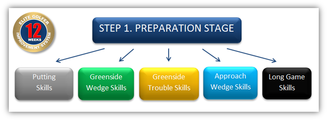









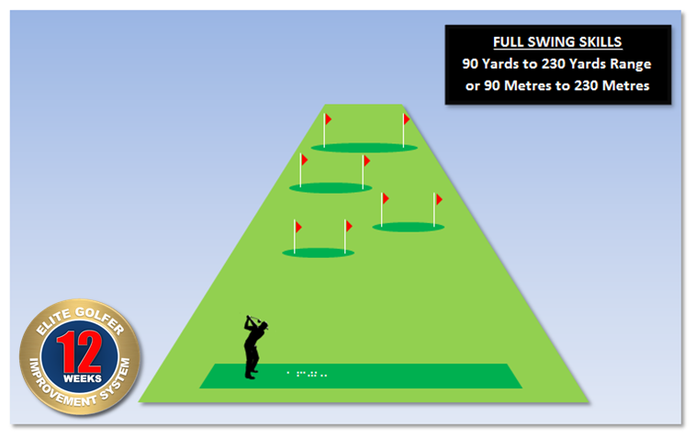











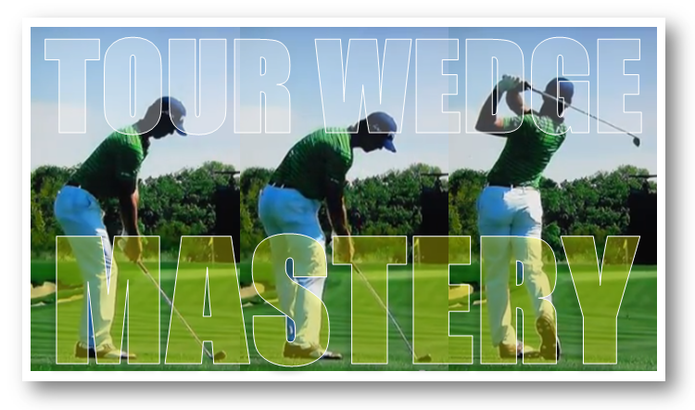

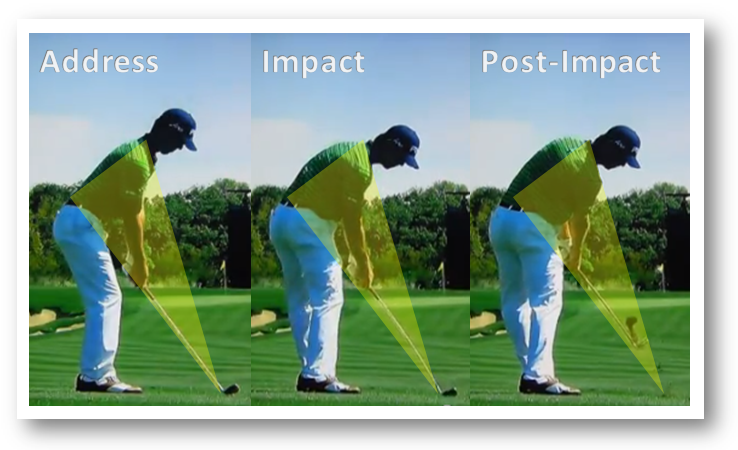




 RSS Feed
RSS Feed



